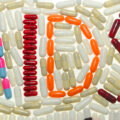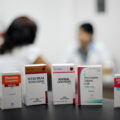Drugs for the treatment of HIV infection
Medicines for HIV infection are aimed at preventing the development of diseases that occur against the background of immunodeficiency and making the patient feel better. The virus itself cannot be eliminated using medication on the body. What medications need to be taken for HIV infection depends on the stage of the disease at the time of its detection. Refusal to undergo medical correction of the health condition leads patients with the immunodeficiency virus to a faster onset of death.
Goals of HIV therapy
Antiviral drugs for HIV infection are prescribed to achieve 3 goals - to:
- restore the body's immune abilities;
- improve the patient's quality of life and increase its duration ;
- minimize the viral load on the body.
Injectable drugs and tablets for HIV infection help prevent the development of secondary diseases. But even after a full examination of the patient, when prescribing medications, the doctor is not 100% sure whether the medicine for HIV infection will help in a particular clinical case.
Medicines for patients suffering from HIV infection
The list of prescribed drugs for HIV infection looks like this:
- Maraviroc . Belongs to the group of CCR5 receptor inhibitors. Has antiviral activity. The drug was developed in the summer of 2007 and is intended for oral administration;
- Raltegravir . The medicine is intended for oral use. Raltegravir is taken orally, 2 times a day. Since 2009, it has been used to treat all HIV-infected patients. Despite its therapeutic effectiveness, Raltegravir significantly weakens the health condition. The likelihood of complications increases after 48 weeks of treatment;
- Elvitegravir . A combination drug widely used to treat patients with immunodeficiency virus. It consists of 2 components: one suppresses the reproduction of copies of the virus in the blood, the second enhances the effect of the first substance. The drug is prescribed in the same regimen with Ritonavir. The medicine is taken orally, 1 time per day, with meals;
- Fuzeon . A powerful antiviral agent. Fuzeon tops the list of medications for the prevention of HIV infection. The drug is administered subcutaneously, daily, in the area of the shoulder, thigh or abdomen;
- Indinavir . The medicine is started with a minimum dosage, gradually reaching 800 mg. The optimal regimen for taking the medication is 3 times a day, 1 hour before or 2 hours after meals. Indinavir is used only in adult patients with HIV infection;
- Phosphazide (Nikavir) . Actively used since 1999. The drug is prescribed at the stage when HIV has caused multiple complications (secondary diseases). Nikavir has a pronounced antiviral ability and helps in the treatment of hepatitis B, which often progresses against the background of the human immunodeficiency virus. The medicine is administered orally, in a dosage of 800 to 1200 mg, divided into 2-3 doses. The advantage of Phosphazide is that it provides a preventive effect: the active component of Nikavir helps prevent infection with the immunodeficiency virus.
The listed medications are not suitable for monotherapy.
What medications are taken for HIV infection in the form of regimens:
1) Tenofovir + Lamivudine + Efavirenz;
2) Lamivudine + Emtricitabine.
During the treatment process, the doctor can adjust what pills patients take for HIV infection. The results of regularly performed diagnostics, the presence of concomitant diseases, and the degree of virus resistance to the drug are taken into account.
Features of antiretroviral therapy
Regardless of the name of the effective tablets for HIV infection, the prescribed drugs must be treated for life.
Drugs for immunodeficiency are taken in regimens. Using only 1 medication does not provide the expected effectiveness.
If the drug is not taken in a timely manner - at the hours prescribed by the doctor - it is not recommended to artificially increase the dosage. This will not help compensate for the substance that did not enter the blood, and will not provide antiviral activity. However, a double dosage of the drug creates a significant burden on the patient’s body and can cause a number of complications.
Attention! Women with HIV infection in the postpartum period are contraindicated in breastfeeding.
When injecting drugs (for example, Fuzeon), you need to regularly change the skin puncture site. Mainly alternate areas of the shoulder, abdominal wall and anterior thigh.
Possible side effects
When prescribing antiviral drugs for HIV infection, the patient is warned about the potential development of complications. These side effects include:
- Pancreatitis (inflammation of the pancreas). The disease occurs in the form of girdling pain, repeated vomiting, weakness, and increased body temperature. The development of pancreatitis is most often provoked by Zidovudine.
- Cirrhosis of the liver. Pathology in half of the cases is caused by Nevirapine.
- Kidney failure. Violation of the condition and activity of the urinary system organ is a consequence of taking an HIV medicine such as Tenofovir.
- A critically high increase in the concentration of lactic acid in the body. The disorder develops while taking a combination of drugs such as Stavudine and Didanosine.
- Toxic damage to the skin. Occurs due to the use of Nevirapine, Efavirenz.
Drugs that support the body of a patient suffering from HIV infection can cause other complications. Among them are problems with the activity of the heart, brain, gastrointestinal tract and nervous system.
Each of the drugs prescribed for immunodeficiency can provoke an unpredictable reaction. Sometimes side effects from the medications used do not occur immediately, but only in the middle of the therapeutic course. But the likelihood of providing health benefits is higher than the risk of developing complications, therefore, for immunodeficiency, these drugs are prescribed. And it is still unknown when a hypoallergenic medicine for HIV infection will be invented, which in 100% of cases will be well tolerated by the body.
Even if the prescribed medicine is on the list of the best effective drugs for HIV infection, it can provoke an allergy. In this case, the patient experiences an attack of suffocation, a rash on the skin of the face and body, itching and other symptoms. Individual intolerance to the drug is the only indication for discontinuation of the drug. In other cases, antiretroviral therapy for HIV cannot be stopped. This can speed up the onset of death.
Disadvantages of existing methods of treating HIV infection
Disadvantages of modern therapeutic programs:
- high toxicity of drugs, increasing the risk of side effects. Moreover, the likelihood of complications does not depend on how much anti-HIV pills cost;
- incompatibility with medications used to treat HIV-associated diseases;
- significant financial expenses. Most medications are provided free of charge to patients with the immunodeficiency virus in a specialized treatment center. But in addition to these medications, you also have to buy anti-HIV drugs yourself - they are expensive, sometimes not commensurate with the budget of the average patient.
Because the immunodeficiency virus continually develops resistance to the medications the patient is taking, medications must be changed regularly. This creates additional difficulties in drawing up an optimal therapeutic program.
None of the medications existing today can eliminate the human immunodeficiency virus. It is unknown when an effective cure for HIV infection will be found. This once again emphasizes the importance of preventing the development of a dangerous disease. Thanks to antiretroviral therapy, it is possible to minimize the risk of secondary complications due to HIV, alleviate the patient’s condition and prolong his life.




